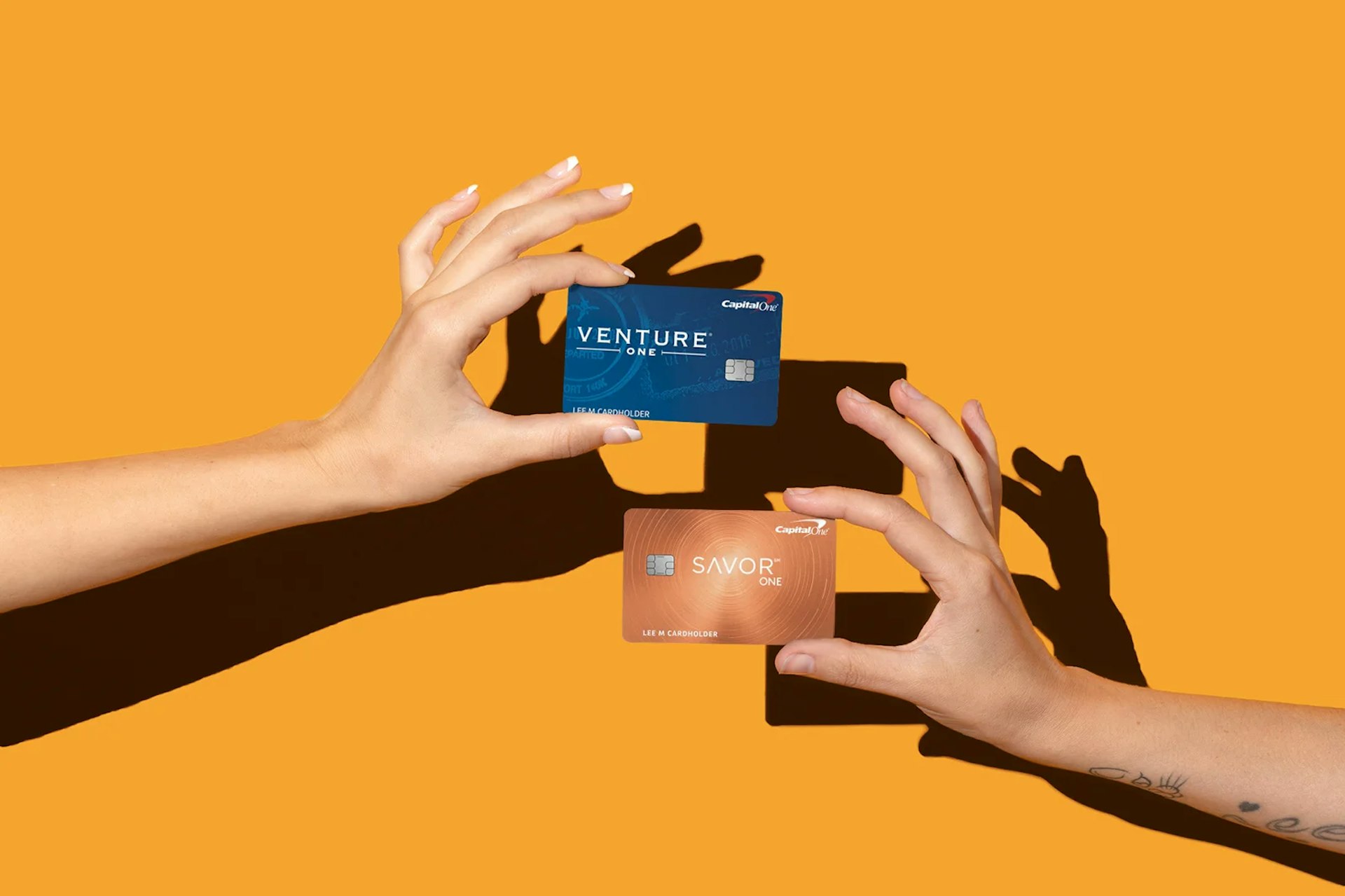This series of articles about credit cards, points and miles, and budgeting for travel is brought to you in partnership with The Points Guy.
Advertiser Disclosure: This post contains references to products from one or more of our advertisers. We may receive compensation when you click on links to those products. Terms apply to the offers listed on this page. This relationship may impact how and where links appear on this site. This site does not include all financial companies or all available financial offers. All information about the Citi cards, Wells Fargo Autograph Card, Bilt Mastercard, Chase Freedom Unlimited, Ink Business Unlimited, and the Discover It Miles Card has been collected independently by Lonely Planet. These cards are not available through Lonely Planet.
Credit cards can be an excellent tool for meeting financial goals and opening up exceptional travel opportunities through rewards programs. While there are plenty of exceptional travel rewards cards that can help you maximize every dollar spent, most consumers will benefit from having at least two credit cards in their wallets. Of course, many of the best cards carry annual fees and the goal is to minimize your out-of-pocket expenses. The solution? Choosing a credit card combination that best suits your needs.
With the right credit card pairing, you can save money on travel, gain access to valuable perks and maximize rewards on every dollar spent. If you’re new to travel points and airline miles, you might be feeling overwhelmed by all the options available. To help you navigate the waters, we’ve compiled a guide to choosing the perfect credit card combinations depending on your spending needs and rewards goals. Here’s everything you need to know to create your ideal credit card pairing:
Best credit cards for airport lounge access
What to look for in credit card combinations
When creating a credit card combination, it’s important to strike the right balance. Look for cards that complement each other in terms of benefits, annual fees and rewards rates. Look for cards that reward various aspects of your spending to maximize your rewards potential to the fullest. If one of your cards offers valuable travel perks, the other should offer perks and rewards that you can take advantage of in your everyday life. If one card has a steep annual fee, the other should have a low or no annual fee. Look for ways to leverage premium benefits without overextending your budget.
The right credit card combination should provide cohesive rewards and benefits that come in handy in different facets of your life. Whether it’s earning accelerated rewards on travel or receiving cash back on everyday purchases, the goal is to build a symbiotic relationship between cards while avoiding duplicate features and excessive annual fees. Look for this sweet spot to optimize your overall credit card strategy.
Best credit cards for airline miles
Best for Chase Ultimate Rewards: Chase Sapphire Reserve® and Chase Freedom Unlimited® credit card
The Chase Sapphire Reserve and Chase Freedom Unlimited credit cards can help you truly maximize every dollar spent, whether on travel or everyday spending. The Sapphire Reserve is an excellent travel rewards card, thanks to an exceptional loyalty program, high-end travel perks and elevated rewards on travel purchases. In exchange for a $550 annual fee, cardholders receive a $300 annual travel credit, Priority Pass and Sapphire Lounge access, an annual fee credit for TSA PreCheck, Global Entry or NEXUS, waived foreign transaction fees and valuable travel protections.
The card also earns up to 10 points per dollar spent on Chase dining and travel purchases and 3 points per dollar at restaurants, eligible delivery services and travel outside of Chase Travel℠. All other purchases earn just 1 point per dollar spent. While the Sapphire Reserve is great for travel, it’s lacking in meaningful spending categories for daily spending. That’s where the Chase Freedom Unlimited comes in.
The card earns 3% cash back on drugstore purchases and dining at restaurants, including takeout and eligible delivery service, 5% cash back on travel purchased through Chase Ultimate Rewards and 1.5% on all other purchases.
What really makes this card combination potent is that you can convert your cash-back rewards to Ultimate Rewards points. From there, you can transfer points to 14 airline and hotel partners for even greater value. The Chase Freedom Unlimited has no annual fee, making it a great way to boost your rewards potential.
Best credit cards for adventure travel

Best for Capital One rewards: Capital One Venture Rewards Credit Card and Capital One SavorOne Cash Rewards Credit Card
The Capital One Venture Rewards Credit Card and Capital One SavorOne Cash Rewards Credit Card make a dynamic duo for those who want elevated rewards on major spending categories and access to one of the most flexible rewards currencies. The Capital One Venture Rewards Credit Card starts off with a generous welcome bonus of 75,000 miles after spending $4,000 within three months of account opening. The card earns 5 miles per dollar spent on hotels and rental cars booked through Capital One Travel and 2X miles on all other purchases.
The card also comes with travel perks like travel accident insurance and access to Capital One and Plaza Premium lounges (ends 1/1/2025). The waived foreign transaction fees make this an excellent choice for international travel, while the elevated earning rates are great for the majority of spending. However, you can optimize your rewards strategy further by adding a Capital One SavorOne Rewards to your wallet (see rates & fees).
The card has no annual fee and earns 5% cash back on hotels and rental cars booked through Capital One Travel. Cardholders also earn 3% cash back on dining, entertainment, popular streaming and grocery spending. All other purchases earn 1% cash back. With dining, streaming and grocery being substantial spending categories, the Capital One SaveOne card can help you maximize your rewards on these recurring expenses. The card also has a $200 cash-back bonus after you spend $500 within three months of account opening.
Cardholders also get practical perks like an Uber One subscription (through November 2024), 10% back on Uber and Uber Eats purchases, 8% cash back on Capital One Entertainment bookings and 0% intro APR on purchases and balance transfers for the first 15 months.
Chase Sapphire Preferred vs. Capital One Venture
Best for Citi ThankYou points: Citi Premier® Card and Citi Double Cash ® Card
The Citi Premier Card and Citi Double Cash Card make a great combination for those who want to earn valuable Citi ThankYou points. The Citi Premier offers generous 3X rewards on common spending categories, including restaurants, supermarkets, gas stations, air travel and hotels. All other purchases earn 1 point per dollar, though you can channel that spending on the Citi Double Cash Card, which earns 2% cash back on all spending (1% when you buy and 1% when you pay it off).
The cashback from the Citi Double Cash can be converted to Citi ThankYou points and transferred to 18 airline and hotel partners. The Citi Premier has a $95 annual fee, while the Citi Double Cash has none, making this a rewarding card combination for maximizing every dollar spent.
The Citi Premier also comes with an annual $100 hotel credit on bookings of $500 or more through the ThankYou travel site. And while the Citi Double Cash Card incurs a 3% foreign transaction fee on purchases made abroad, the Citi Premier waives this fee. Overall, these two cards balance each other out well with their complementary benefits and reward structures.
Best credit cards for traveling with kids

Best for renters: Wells Fargo Autograph℠ Card and Bilt Mastercard®
The Wells Fargo Autograph Card and Bilt Mastercard are great for renters who want to maximize their biggest expenses. The Bilt Mastercard has the unique distinction of earning fee-free rewards on rent payments (up to 100,000 points per calendar year). Cardholders also earn 3 points per dollar spent on dining, 2X points on travel and 1X on all other purchases. On the first day of the month, all spending (except rent) earns double rewards, making it even more lucrative.
The inclusion of trip cancellation and interruption insurance, trip delay protection, no foreign transaction fees and primary rental car insurance makes this an excellent no-annual-fee travel card. Points are also transferrable to 15 airline and hotel transfer partners. They include World of Hyatt, United MileagePlus and other popular programs.
The Wells Fargo Autograph is a great companion to the Bilt Mastercard because it makes up for a few deficiencies. For starters, the Bilt card has no welcome bonus, while the Autograph card earns 30,000 bonus points (for $300) after spending $1,500 within three months of account opening. The card also earns a generous 3 points per dollar spent on dining, travel, gas, transit, popular streaming and phone plans. Together, these two no-annual-fee cards provide plenty of travel perks and elevated rewards.
You've applied for a credit card: what's next?

Best for all spending: American Express® Gold Card and Amex Blue Business® Plus Credit Card
If you want to supercharge your Amex Membership Rewards account without paying two annual fees, the American Express Gold Card* and Blue Business® Plus Credit Card* make an excellent pairing. The Amex Gold Card earns 4 points per dollar spent on dining worldwide and at U.S. supermarkets (up to $25,000 per calendar year). The card also earns 3 points per dollar on flights (booked directly or via Amex Travel) and 1X on all other purchases.
The Blue Business Plus is an excellent alternative for all other purchases since it earns 2 points per dollar spent on up to $50,000 per year (then 1X after). The Blue Business Plus has no annual fee and currently offers a welcome bonus of 15,000 points after spending $3,000 within the first three months of account opening.
While the Blue Business Plus has a 2.7% foreign transaction fee (see rates & fees), the Amex Gold card does not. Beyond earning elevated rewards, this card combo gets you access to valuable Amex perks like the Amex Offers program, which includes discounts and bonus points at popular merchants. The Amex Gold Card also has a $10 monthly Uber Cash credit and a $10 monthly dining credit valid at select restaurants. These recurring credits help offset the card’s $250 annual fee (see rates & fees).
American Express Membership Rewards vs. Chase Ultimate Rewards

Best for small businesses: Chase Ink Business Preferred® Credit Card and Ink Business Unlimited® Credit Card
The Ink Business Preferred and Ink Business Unlimited make an excellent card pairing for business spending. The Ink Business Preferred earns valuable Chase Ultimate Rewards, while the Ink Unlimited earns cashback that can be converted to points. Both cards offer elevated rewards that can help small businesses maximize every dollar spent without going overboard on annual fees.
The Ink Business Preferred starts off with one of the highest credit card welcome bonuses at 100,000 points after you spend $8,000 within three months of account opening. These points are worth at least $1,250 towards Chase TravelSM bookings, though you can get even more value by transferring them to popular travel loyalty programs. Meanwhile, the Ink Business Unlimited earns $750 cash back after you spend $6,000 within the first three months of account opening. These points can be converted to 75,000 Ultimate Rewards points. Regardless of whether you redeem cash or points, these rewards can save you money on travel.
Beyond welcome bonuses, the ongoing rewards offered by these cards complement each other nicely. The Ink Business Preferred earns 3 points per $1 on the first $150,000 spent in combined purchases annually on shipping, advertising, internet, cable, phone services and travel. For all other purchases, Ink Business Unlimited earns 1.5% cash back at no annual fee.
TSA PreCheck vs. Clear: which one is best to expedite your travels
Best for cash back: Amex Blue Cash Preferred® Card and Discover It Miles Card
The Blue Cash Preferred® Card from American Express* and Discover It Miles Card make an excellent pairing if you're purely after maximizing cash back rewards. The Blue Cash Preferred has a $95 annual fee that’s waived for the first year. The card earns 6% cash back at U.S. supermarkets (up to $6,000 per year) and streaming, 3% cash back on transit and US gas stations and 1% on everything else. The Discover It Miles Card is a great alternative for all spending that falls outside of these bonus categories. The card earns a flat 1.5 miles per dollar spent.
While Discover’s Rewards program references “miles,” these are actually equivalent to 1.5% cashback. Moreover, Discover doubles all rewards earned in the first year, so you’ll really earn 3% cash back on all purchases, with no annual fee. You can even use the card abroad without paying a 2.7% foreign transaction fee imposed by the Amex Blue Cash Preferred.
While the Discover It Miles Card has no welcome bonus, the Amex Blue Cash Preferred offers $250 cash back after spending $3,000 within the first six months of account opening. By combining the Amex Blue Cash Preferred and Discover It Miles Card, you get the best of both worlds: A welcome bonus, high category bonuses, generous rewards on all other purchases and waived foreign transaction fees.
Best credit cards for road trips

Bottom line
Taking time to choose the best credit card combination can save you money on annual fees while optimizing your rewards potential. By ensuring that your credit card portfolio consists of balanced benefits within a reasonable budget, you can maximize every dollar spent while enjoying benefits that meet your personal goals. The above pairings are a great starting point and will hopefully help you determine what combinations best fit your lifestyle and spending habits.
10 beautiful hotel pools around the world
* Eligibility and Benefit level varies by Card. Terms, Conditions, and Limitations Apply. Please visit americanexpress.com/benefitsguide for more details. Underwritten by Amex Assurance Company.
Terms apply to American Express benefits and offers. Enrollment may be required for select American Express benefits and offers. Visit americanexpress.com to learn more.
Editorial disclaimer: Opinions expressed here are the author’s alone, not those of any bank, credit card issuer, airline or hotel chain, and have not been reviewed, approved or otherwise endorsed by any of these entities












